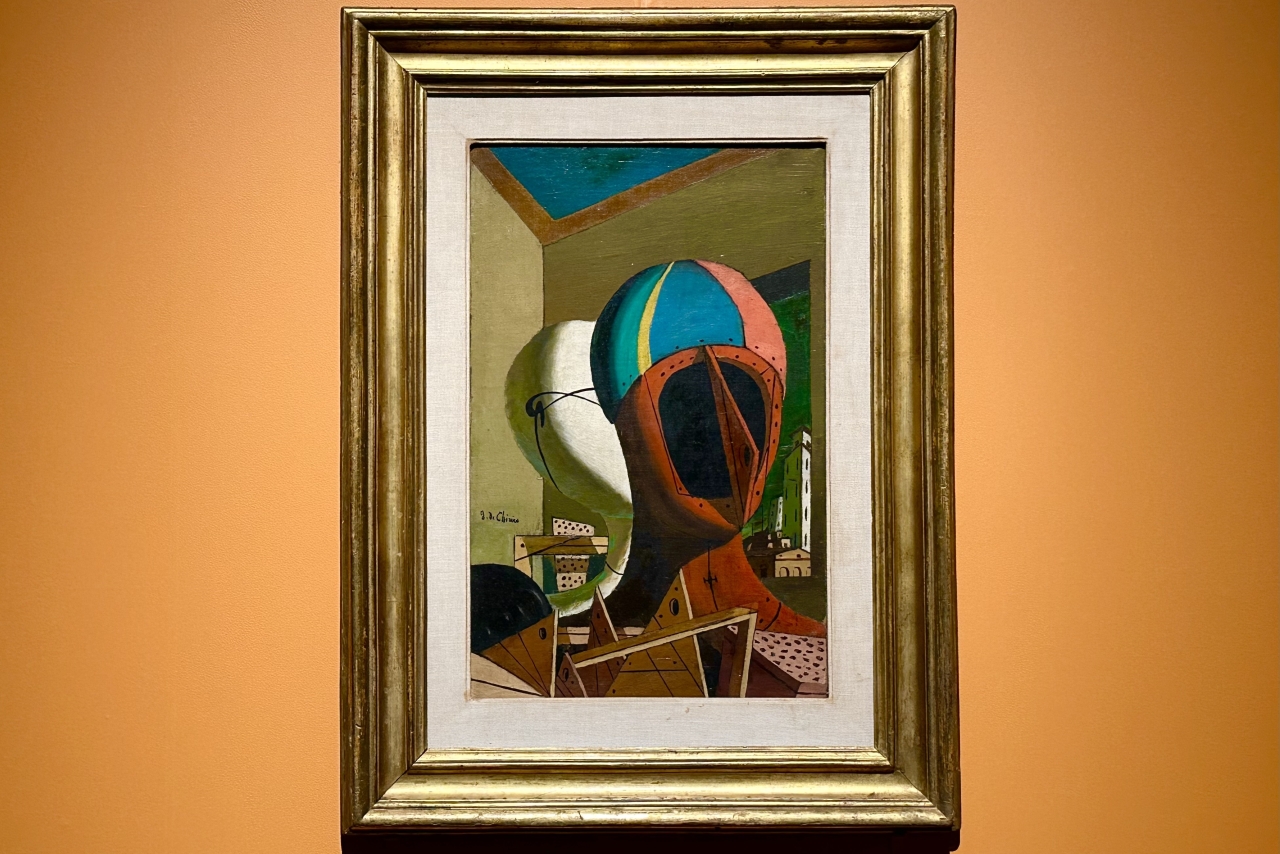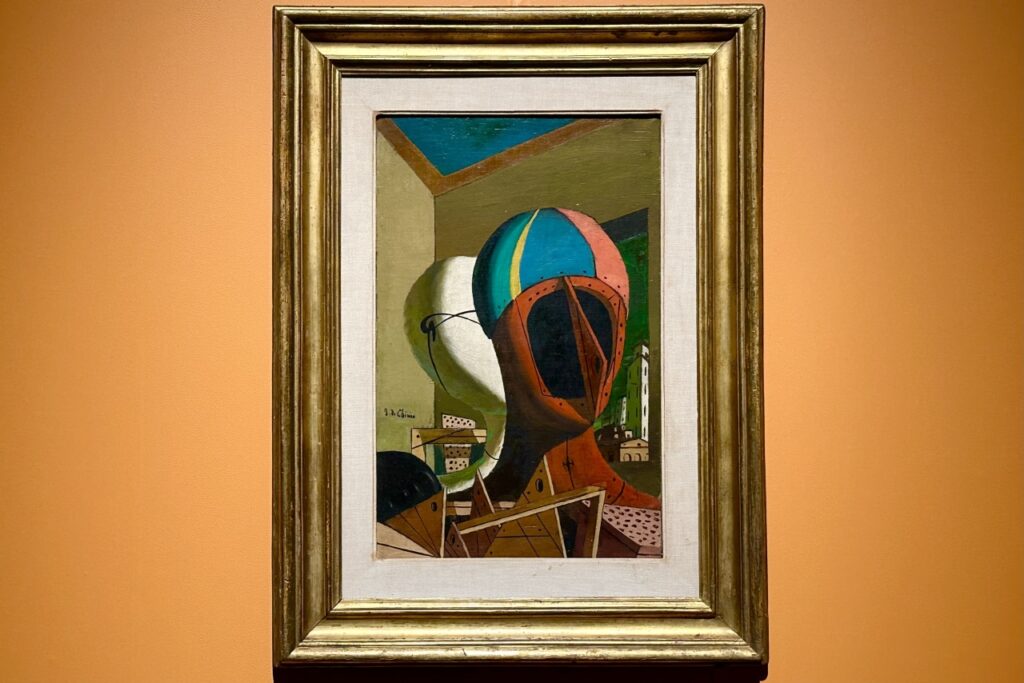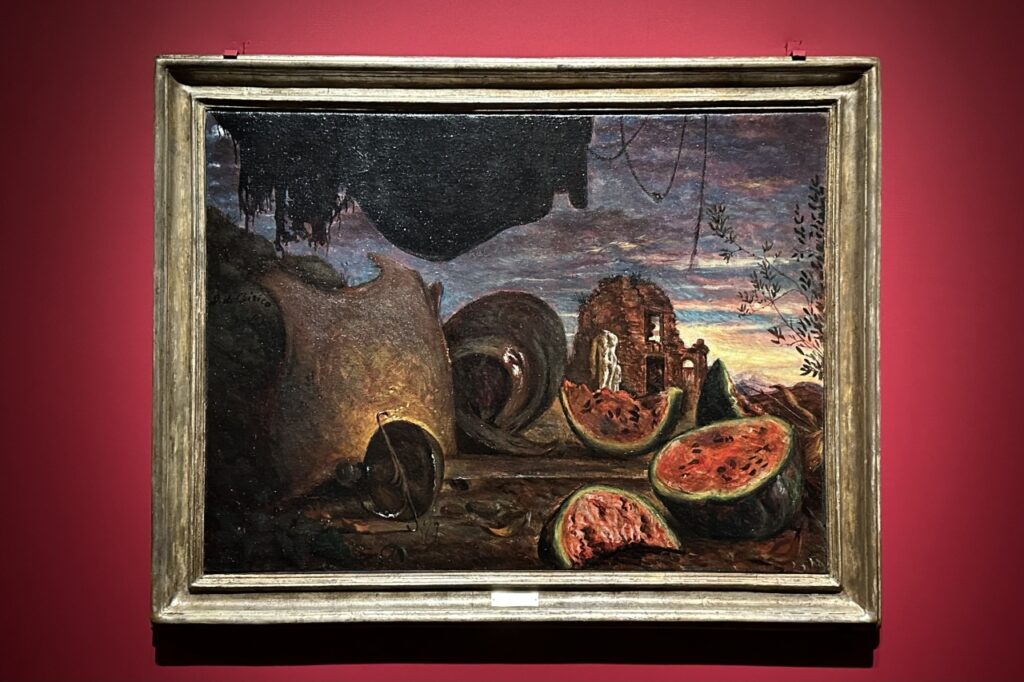
From Friday, May 10th to Sunday, May 26th, enjoy a cultural walking tour with a stamp rally around popular spots and gourmet spots in the Ueno area!
In the Ueno area, in commemoration of International Museum Day on May 18th, 12 facilities around Ueno Park, including museums, art galleries, and the zoo, will cooperate with Ueno Norenkai member stores to hold Ueno Museum Week. This year, a digital stamp rally will also be held for the first time. On International Museum Day on May 18th, multiple museums will be free to enter. Make the most of the event by using the annual “Town Fun” coupons.
The biggest attraction this year is the first-ever digital stamp rally! There will be 13 stamp points in the Ueno area, from cultural facilities in Ueno Park to various spots in the Ueno shopping district!
In addition to the cultural facilities in the park, there are also other spots in the city where you can feel art, such as the Matsuzakaya Ueno Store Main Building 7F Art Gallery, ABAB Ueno Store 6F “Uenoshita Studio”, and CREATIVE HUB UENO “es”, an art space in Ueno Station. Among them, BUZZCHIKA (located in the basement of Shinobaz Brewery Hitsuji Ice) is an art hotspot in the city where young artists’ exhibitions and plays are actively held. Enjoy the atmosphere of Ueno, the city of art, along with the stamp rally. The stamp rally rewards include coupons that can be used at Ueno stores at one stamp (you can get up to 13 per stamp!), creator collaboration digital art works at three stamps, and prizes from participating cultural facilities at seven stamps.
Another highlight is the “free admission” on May 18th, “International Museum Day.” On that day, you can visit three museums for free: the Tokyo National Museum, the National Museum of Nature and Science, and the National Museum of Western Art. In addition, this year the Tokyo University of the Arts Museum will be giving away original museum goods to the first 50 visitors.
*The free admission day for the Taito Ward Former Tokyo Music School Concert Hall is Wednesday, May 15th. Please be careful not to make a mistake.
The annual coupon service can be used at 11 Ueno Noren-kai stores. During the period, please present the admission ticket stub of one of the 12 cultural facilities participating in Ueno Museum Week 2024. We will be offering generous free services such as complimentary soft drinks, draft beer, desserts, and 10% off purchases. Invite your friends and family to enjoy the whole of Ueno’s “forest” and “town.”

■Event Overview■
International Museum Day Commemorative Events 2024 Ueno Museum Week Period: Friday, May 10, 2023 to Sunday, May 26, 2023
Venues (participating facilities and organizations): Tokyo National Museum / National Museum of Nature and Science / National Museum of Western Art / Tokyo University of the Arts Art Museum / Tokyo Metropolitan Art Museum / Ueno Zoological Gardens / The Ueno Royal Museum / Taito Ward Former Tokyo Music School Concert Hall / Former Iwasaki Garden / National Museum of Modern Architecture / National Diet Library International Children’s Library / Toeizan Kan’ei-ji Temple / Ueno Noren Association participating stores (in no particular order)
*There will be days when the museum is closed during the exhibition period.
Organized by: Ueno Museum Week Executive Organization Federation Co-organized by: Ueno Norenkai Supported by: National Museum of Nature and Science Foundation Cooperation: Tokyo Metropolitan Government Eastern Park and Green Space Office, Taito City, Taito City Arts and Culture Foundation Official website: http://www.ueno-mw.com/

■[Ueno Morimachi Wandering] Ueno Museum Week 2024 ~ International Museum Day ~ ■
A digital stamp rally will be held from Friday, May 10th to Sunday, May 26th. Stamp points will appear at the participating facilities listed below.
[Participating facilities]
・National Museum of Nature and Science・National Museum of Western Art・Tokyo National Museum・Ueno Royal Museum・Concert Hall of the Former Tokyo Music School・Former Iwasaki Residence Gardens・Tokyo University of the Arts Art Museum・International Library of Children’s Literature・Kaneiji Temple・Matsuzakaya Ueno Store Main Building 7F Art Gallery・ABAB Ueno Store 6F “Uenoshita Studio”
・BUZZCHIKA
・CREATIVE HUB UENO “es”
【How to Use】
Download the digital stamp rally Furari on your smartphone. Go to the designated location of the participating facilities and get a stamp. With one stamp, you can get a coupon that can be used at Ueno stores (you can get up to 13 for each stamp!), with three stamps you can get a creator collaboration digital art piece, and with seven stamps you can get prizes from participating cultural facilities. Prizes will be shipped to the winners one to two months after the Museum Week ends.
1 stamp….Coupons that can be used at Ueno stores (You can get up to 13 coupons for each stamp!)
3 stamps….. Creator collaboration digital art work 7 stamps….. Prizes from participating museums
[Coupons that can be used at Ueno stores]
Please refer to the coupon service for stores offering coupons.
[Creator Collaboration Digital Artwork]
We will be distributing digital artworks created by four young artists from the Ueno area-based art support group, Geio Nurture Town Club.
TOMIMO and Akina create works based on the theme of “Encounter with Memory.” They explore the gap between reality and reality by incorporating not only the human gaze but also the machine gaze. Their main exhibitions include “Mamono” (Ginza Nikon Salon, 2018), “HUMAN<3” (Kyoto International Film and Art Festival, 2019), and “Where is my bus?” (Tanegashima Space Art Festival, 2019) under the name of Tomimoto Travel. Their books include “mamono” (PlaceM Publishing, 2020). Graduated from the Tokyo University of the Arts Graduate School of Advanced Art and Media.
Web: https://ak-7.net


Jiyuu
Graduated from Tama Art University, Department of Crafts, majoring in metal. Using materials such as metal, antlers, and wood, he creates original sci-fi works using craft techniques. Recently, he has also been creating derivative works using 3D printers.
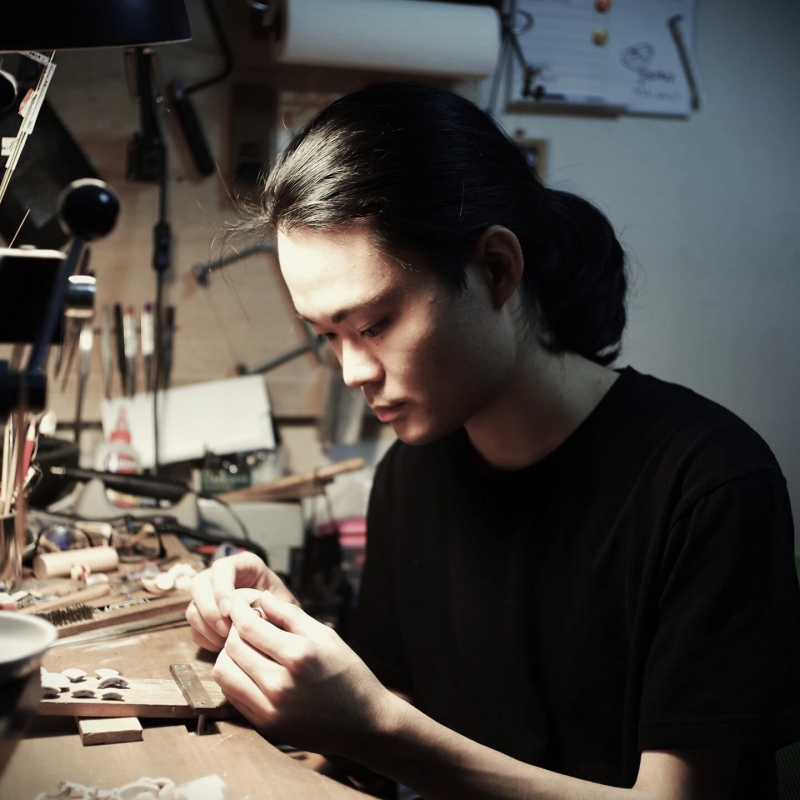

MAHANA
fair enoughCreative director
Depending on the concept and expression, various techniques are used, from flat to three-dimensional works. The concept of the work is to project the thoughts of the time, from personal to social satire.
Instagram: https://www.instagram.com/mahana_fe_d/?hl=ja
fair enough
fair enough is a designer brand launched in 2021. The brand explores expression with the concept of “sufficient fairness and dialogue” and will be exhibiting at New York Fashion Week 2024AW.
Instagram: https://www.instagram.com/fairenough_official_/?hl=ja
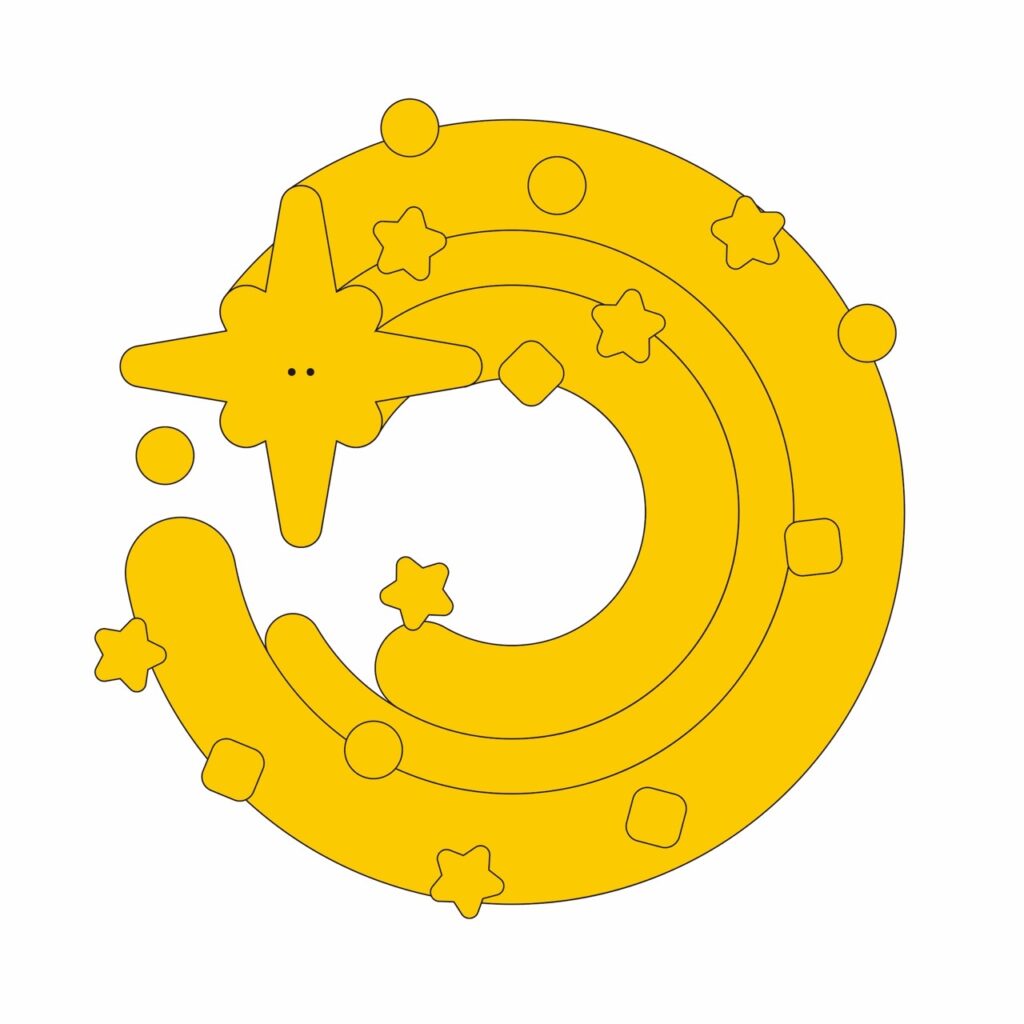

Kobori Sayaka<br />Plush toy artist. Representative of smallmoat(combined). Born September 18, 1991.
Born in Niigata Prefecture and raised in Kanagawa Prefecture. We create palm-sized original characters based on the concept of “not just”. We create everything from pattern making to dyeing and accessory production from scratch.
Instagram: https://www.instagram.com/coborisayaka/?hl=ja


CHIKA TOYS
Chika <br />Originally from Fukuyama City, Hiroshima Prefecture. She creates a retro-future worldview by fusing mecha with cuteness. It is a story about rusty robots who continue to live as humans in a decaying world. She has been an artist for 10 years. She has exhibited at various events and has also exhibited her works at the Art Education Association.
Instagram: https://www.instagram.com/chikatoys/?hl=ja


[List of prizes for participating museums]
〇 20 pairs of 40 National Museum of Nature and Science common invitation tickets
〇 National Museum of Western Art “Naito Collection Manuscripts – A Microcosm of the Elegance of the Middle Ages” admission tickets (20 pairs, 40 tickets)
*Tokyo National Museum General Cultural Exhibition invitation ticket + original ticket folder set (20 pairs, 40 tickets) *Special guided tour invitation (held on a date designated by the museum) (10 pairs, 20 people)
– 16 original goods from the “Dinosaur Picture Book Exhibition” held at the Ueno Royal Museum last year (a set of a mug, ballpoint pen, and sticker)
* 10 sets of 2 invitation tickets for the former Tokyo Music School Concert Hall + 1 ticket folder (total of 20 invitation tickets and 10 ticket folders)
〇 Original Iwasaki Residence Garden eco bag 20 people (1 per person)
〇Tokyo University of the Arts University Art Museum Original postcard (20 winners)
* Kan’ei-ji Temple special stamp book not for sale 20 winners (1 per person)

■Coupon Service■
During the period from Saturday, May 6th to Sunday, May 28th, you can receive free services by presenting your ticket stub from each museum at the stores listed below. For details on the services, please see the Ueno Museum Week official website.
[Participating stores]
Yoshi Sushi Ueno Branch, Anmitsu Mihashi, Izuei (eel restaurant), Hatoya (ladies’ clothing), Tenju (tempura), Kaiseki Chinese cuisine Ueno Ikenohata Kogets, Western cuisine Kurofunetei, Kameya Issui-tei (grilled eel and seasonal vegetables), Yakiniku Taishoen, Selected Western cuisine Sakurai, Shabu-shabu Hachinoki
【How to Use】
Present your ticket stub for a cultural facility in Ueno Park. *Present one ticket per person. *Cannot be used in conjunction with coupon services.


■Presents■
[Ueno Royal Museum]
May 3rd (Friday, National Holiday) Museum original goods giveaway Time: 10:00~
●Contents: Limited to the first 50 visitors to the exhibition at the reception counter
[National Museum of Western Art]
Saturday, May 18th: Museum original postcard giveaway Time: 9:30am
●Location: Permanent exhibition ticket gate ●Target: First 200 visitors to the permanent exhibition
[Tokyo University of the Arts Museum]
Saturday, May 18th: Museum original goods giveaway Time: 10:00~
●Location: Entrance hall ●Target: First 50 visitors to the exhibition
[BUZZCHIKA Exhibition Information]

Exhibition title: FIND IT!!!
Small organisms that have popped out from Ueno Forest into the city gather in the space called Buzzchika. Enjoy the experience of encountering a wide variety of organisms that you would never encounter in your everyday life.
Dates: May 10th (Fri) – 12th (Sun), 2024, May 17th (Fri) – 19th (Sun), 24th (Fri) – 26th (Sun)
Time: 13:00-17:00
Location: 2-10-7 Ueno, Taito-ku, Tokyo 110-0005, Japan
Exhibiting artists: Sayaka Kobori, Jiyu, Chika Toys, MAHANA fair enough

■What is International Museum Day? ■
“International Museum Day” is a museum commemoration day established by the International Council of Museums (ICOM) in 1977. Commemorative events are held at museums around the world on and around May 18th with the aim of familiarizing many people with museums and raising awareness of the role of museums. Ueno, which is rare even on an international level in terms of the large number of cultural facilities such as museums and art galleries gathered there, holds various commemorative events every year around “International Museum Day” as “Ueno Museum Week”, held by cultural facilities and the Ueno Noren Association.
■Ueno Norenkai■
Ueno, the cloud of flowers, is the representative entertainment district of this part of Edo. It is the source of art and culture in the Meiji period. The Ueno Noren Association is a federation of about 100 famous stores in Ueno. Since its founding in 1959 (Showa 34), it has been publishing the town magazine “Ueno” every month with the aim of rediscovering the cultural traditions of this area. This is the 776th issue (as of May 2024).
■ Flyer ■

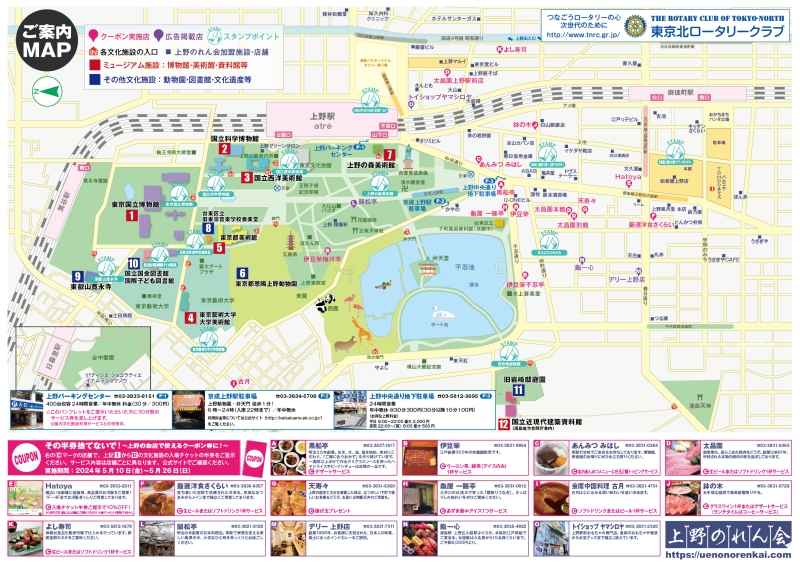
◎Inquiries Ueno Museum Week Executive Committee Secretariat
TEL 03-3833-8016 FAX 03-3839-2765 (Ueno Norenkai, weekdays 10:00-17:00)
From the Ueno Norenkai press release
Article provided by: Kokosil Ueno
See other exhibition information


